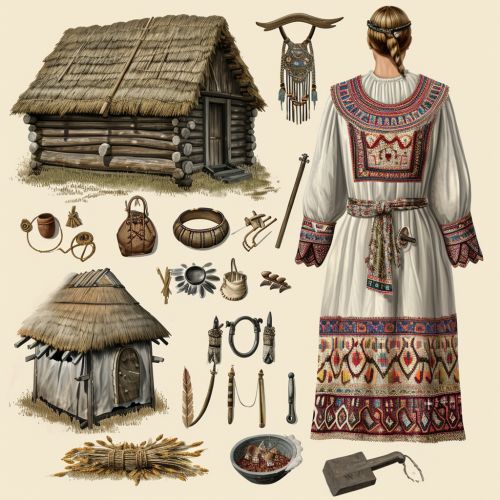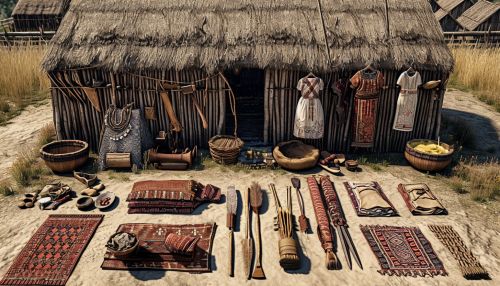History of the Slavic peoples
Origins of the Slavic Peoples
The origins of the Slavs can be traced back to the 6th century CE, in the region of Eastern Europe. The Slavs are believed to have emerged from the Proto-Slavic culture that developed in this region from about 1700 BCE to 500 CE. The Proto-Slavic culture itself is thought to have evolved from the broader Indo-European culture, which spanned across Europe and Asia.


The Slavs are divided into three main groups based on their geographical location and dialect: the West Slavs, the East Slavs, and the South Slavs. The West Slavs include the Poles, Czechs, and Slovaks. The East Slavs comprise the Russians, Ukrainians, and Belarussians. The South Slavs include the Serbs, Croats, Slovenes, Macedonians, and Bulgarians.
Migration and Expansion
The Slavic peoples began to migrate and expand across Europe in the 5th and 6th centuries CE. This period, known as the Great Migration, saw the Slavs move westwards into Central Europe and the Balkans, and eastwards into the territories of modern-day Russia and Ukraine. The reasons for this migration are not entirely clear, but it is believed to have been driven by a combination of political, economic, and environmental factors.
The Slavs were primarily an agrarian society, and their expansion was facilitated by their advanced farming techniques. They were also skilled warriors, and their military prowess played a significant role in their expansion. The Slavs established numerous kingdoms and principalities across Europe, many of which would go on to become major European powers.
Slavic Languages
The Slavic languages form a distinct branch of the Indo-European language family. They are divided into three subgroups: East Slavic, West Slavic, and South Slavic. The East Slavic languages include Russian, Ukrainian, and Belarussian. The West Slavic languages include Polish, Czech, and Slovak. The South Slavic languages include Serbian, Croatian, Slovene, Macedonian, and Bulgarian.
The Slavic languages share a high degree of mutual intelligibility, particularly within their respective subgroups. They are characterized by a complex grammatical structure, with a rich system of inflection for nouns, adjectives, pronouns, and verbs. The Slavic languages also have a distinctive phonetic system, with a wide range of consonant and vowel sounds.
Slavic Religion and Mythology
The Slavic peoples originally practiced a form of polytheistic paganism, known as Slavic mythology. This belief system was characterized by a pantheon of gods and spirits, each associated with a specific aspect of nature or human activity. The chief god was Perun, the god of thunder and lightning, while other important deities included Veles, the god of the underworld, and Svarog, the god of the sky and fire.
With the advent of Christianity in the 9th and 10th centuries, the Slavic peoples gradually converted to the new faith. The process of Christianization was often a complex and contentious one, with many Slavs resisting the imposition of the new religion. However, by the end of the Middle Ages, the majority of Slavs had become Christian, with the Orthodox Church predominant in the East and the Catholic Church in the West.
Slavic Art and Culture
Slavic art and culture have a rich and diverse history, with distinct traditions in literature, music, visual arts, and architecture. Slavic literature is characterized by a strong oral tradition, with epic poetry and folk tales playing a central role. Music is also an important part of Slavic culture, with traditional folk music often featuring complex harmonies and rhythmic patterns.
In the visual arts, the Slavs are known for their intricate woodcarving and embroidery, as well as their distinctive icon painting tradition. Slavic architecture is characterized by a blend of indigenous and foreign influences, with Byzantine, Romanesque, and Gothic styles all leaving their mark on Slavic building design.
Conclusion
The history of the Slavic peoples is a fascinating journey through time, from their origins in Eastern Europe to their expansion across the continent and beyond. Their rich cultural heritage, diverse languages, and complex religious history provide a unique insight into the development of European civilization.
